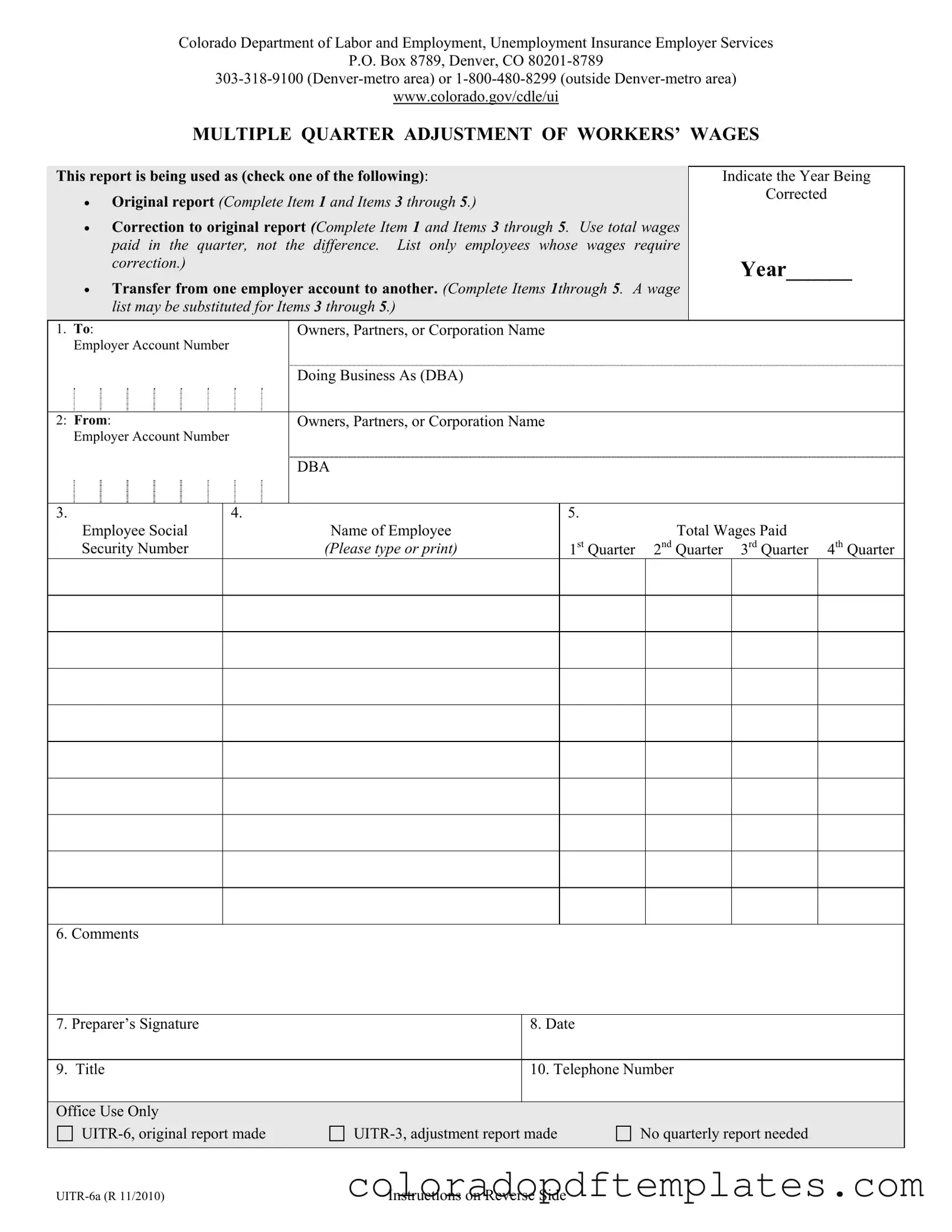Download Colorado Uitr 6A Form in PDF
The Colorado Uitr 6A form is a report used by employers to adjust workers' wages across multiple quarters. This form allows for the correction of previously reported wages, the reporting of wages that were never submitted, or the transfer of earnings between employer accounts. Proper completion of the Uitr 6A ensures accurate wage reporting and compliance with state unemployment insurance requirements.
Make This Colorado Uitr 6A Online
